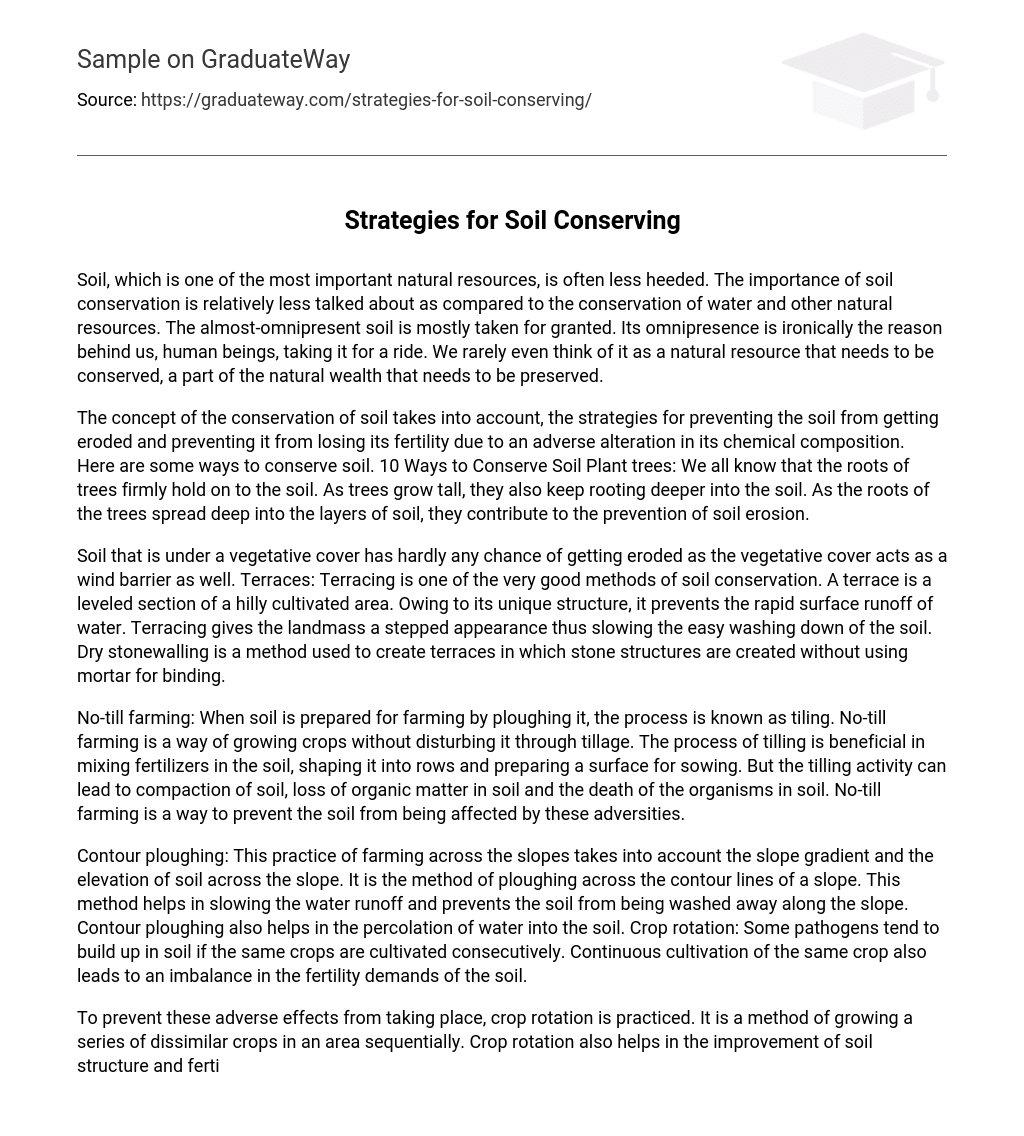Soil, an essential natural resource, is often overlooked. Its importance in conservation is often overshadowed by water and other resources. Despite its widespread presence, we tend to neglect its significance. Ironically, its abundance leads us to take it for granted. We seldom acknowledge it as a valuable resource in need of preservation, a crucial component of our natural wealth.
The idea of soil conservation revolves around the prevention of soil erosion and the maintenance of fertility by avoiding negative alterations in its chemical composition. Here are 10 methods for conserving soil:
- Planting trees: The roots of trees firmly grip the soil, and as they grow taller, their roots delve deeper into the ground, aiding in erosion prevention.
The presence of vegetation acts as a wind barrier and protects the soil from erosion. Terracing is an effective technique for soil conservation, which involves creating leveled sections on hilly cultivated areas to prevent rapid surface runoff of water. This method gives the land a stepped appearance and slows down soil washout. Dry stonewalling is used to construct terraces without mortar for binding the stone structures.
No-till farming refers to growing crops without disturbing the soil through tillage, which is the process of ploughing it. While tilling is helpful in blending fertilizers into the soil and shaping it for sowing, it can also result in soil compaction, organic matter loss, and harm to soil organisms. Therefore, no-till farming is an approach that aims to protect the soil from these adversities.
Contour ploughing is a farming practice that considers the slope gradient and soil elevation. It involves ploughing across the contour lines of a slope to prevent soil erosion and facilitate water percolation. By slowing down water runoff, contour ploughing helps protect the soil from being washed away along the slope.
Another beneficial practice is crop rotation, which involves cultivating different crops consecutively instead of continuously growing the same crop. This helps prevent the accumulation of pathogens in the soil and avoids imbalances in the soil’s fertility demands caused by continuous cultivation of the same crop.
To prevent negative effects from occurring, crop rotation is practiced. It involves growing different crops one after another in the same area. This practice also enhances soil structure and fertility. Soil pH is another factor influenced by the contamination of soil through acidic or basic pollutants and acid rains. The pH level of the soil affects nutrient availability for plants, and maintaining the optimal pH value is crucial for soil conservation.
Water the soil: Rather than just watering plants and crops, it is crucial to also focus on watering the soil itself. By adopting this practice, we can effectively conserve soil and combat soil erosion caused by wind. Salinity management is another important aspect to consider. When soil accumulates excessive salts, it adversely affects the metabolism of crops and harms the vegetative life in the soil. If vegetation dies, it will inevitably lead to soil erosion.
Salinity management indirectly contributes to soil conservation. Promoting soil organisms, such as earthworms, is important as they improve soil aeration, increase macronutrient availability, and enhance soil porosity. These beneficial organisms play a crucial role in maintaining fertility and conserving the soil. Planting indigenous crops also benefits soil conservation. When non-native plants are grown, it is recommended to border fields with indigenous crops to prevent erosion and achieve effective conservation.





